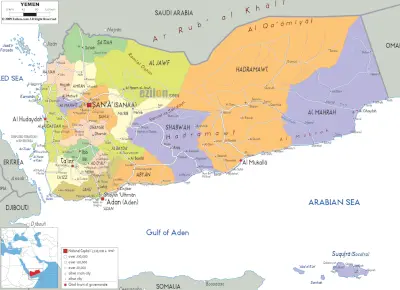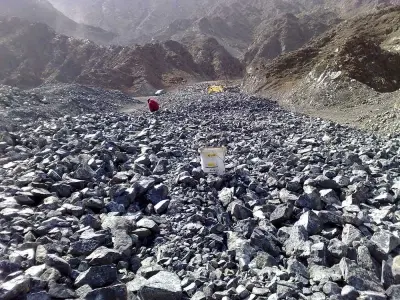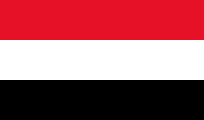Minerals Prices in Yemen
Yemen is located in southwest Asia and south of the Arabian Peninsula, the capital of which is the beautiful city of Sanaa. Scientists have identified over 4000 minerals of the earth's crust. Trade balances in Yemen are about 14% higher than before, and growth in this area is considered acceptable. Substances that are formed based on natural processes are called minerals. Britain conquered Yemen in 1943 but gained independence in 1967. The present-day Republic of Yemen was established in 1990 in Yemen. Minerals can be identified by their physical properties, such as hardness, color, appearance (luster) and odor
Add your import and export orders to this list
Warning: Undefined variable $formTitle in /home/anbar/domains/anbar.asia/anbar/inc/html/desktop/orderform.php on line 10
Warning: Undefined variable $marketName in /home/anbar/domains/anbar.asia/anbar/inc/html/desktop/orderform.php on line 12
Warning: Undefined variable $location in /home/anbar/domains/anbar.asia/anbar/inc/html/desktop/orderform.php on line 12
If you want to trade in the , please join in Anbar Asia. Your order will be shown here, so the traders of contact you

Estimates show that the revenue situation in Yemen in 2019 grew by about 12 percent. Some minerals can be detected by a little more features than the naked eye. Sanaa is one of the most important cities in Yemen, which has grown a lot in terms of work as beautiful city in the field of tourism. Providing quality material has a huge impact on your reputation as a trader
- Yemen Chalcopyrite Market
- Yemen bauxite Market
- Yemen Cassitrite Market
- Yemen Coal Market
- Yemen Chromite Market
- Yemen Galena Market
- Yemen Hematite Market
- Yemen Sphalerite Market

Yemen has several climates. Western Yemen benefits from monsoon rains, which fall mainly in late spring and at the end of summer. Most of the rain falls in the mountains, with an annual maximum of a 1,000 millimetres in the southern mountains, decreasing gradually to an average of 400 millimetres in the northern mountains.
Read More ...
Chromite is found as stone in nature. This stone is also known as chromite and contains chromium oxide with the formula FeCr2O4. Chromite occurs in mineral deposits and veins and may be found in the ground as small particles or larger deposits. Accumulations of chromite are found in some regions of the world including South Africa, Albania, Kazakhstan, Turkey and India.
Read More ...Investment Opportunities in Metallic Minerals in Yemen. There are information available that were the findings of researches, previous projects and and exploration activities and mining for minerals in Yemen. These indicate that significant minerals such as gold, lead, zinc, copper, silver, nickel, iron and titanium do exist in Yemen. Previous studies have shown that Yemen’s geological conditions and other relevant factors go in line with the ideal regional and international registered minerals models and standards. According to geological studies carried out in this regard, Yemen possesses great investment opportunities in minerals that were identified and discovered in several areas of Yemen; these include gold, copper, nickel, platinum, zinc, lead, iron, titanium, tungsten, tin and radioactive elements along with other rare elements and minerals. 7 grams / ton Minerals Company) from April 2016. 5 Hajja Governorate: 20-170 grams / ton (operator, Yemeni A’lamar Company Alamar, since 2012). 6 La’ah, Hajja Governorate, 20-30 grams of gold / ton (Operator, Yemeni WekfiksInsan Company, since 2014). 3 grams of gold / ton (Operator, Yemeni WekfiksInsan Company, since 2012). Zinc and lead mineralization in Yemen is found in the Jurassic limestone rocks in A’mran connected with Remlet Al-Sabatayn basin in the form of faults and pockets of dolomite rocks. What follows is a list of the sites where zinc and lead minerals are found; these are as follows:. What follows is a list of the most important sites having these minerals:. 5% Nickel ( Operator Yemeni WekfiksInsan Company). 5% Nickel (Yemeni WekfiksInsan Company). Important mineralization of rare earth elements exists in the Republic of Yemen. What follows is a list of the most important sites having these minerals:-. 9%Fe2o3 Iron Oxide (operator, Yemen Iron Steel Company). Tin and tungsten mineralization could found in Yemen in the granite rocks affliated to the tectonic movements.
Read More ...
Trade diminished in the 16th century, when the Portuguese set out to control seaborne commerce with the East, turning the Red Sea region, and especially Yemen, into an economic backwater. The only world commodity left to Yemen was the coffee trade, a monopoly that continued for several centuries. Still, trade remained quite modest until the economic boom of the 1970s and ’80s; at the height of this boom, the value of Yemeni exports (primarily coffee, cotton goods, and hides and skins) amounted to only a minute fraction of imports, which comprised foodstuffs of all types, manufactured goods (consumer as well as industrial), machinery, transportation equipment, chemicals, and petroleum products—the basic goods demanded by a population formerly isolated from the modern consumer economy. With the exception of oil exports, however, Yemen conducts all but an infinitesimal portion of its export trade with its regional neighbours. Yemen’s biggest trade partners are China and Saudi Arabia. Other major destinations of Yemen’s exports are Thailand, Malaysia, the United Arab Emirates, and Oman. Yemen imports grains, food products, chemicals, and machinery. Tourism accounts for a relatively small portion of the GDP; despite Yemen’s rich natural and cultural heritage and government efforts to encourage tourism, the and political instability have made many visitors wary of travel to the country. Although the government acknowledges the right of workers to organize, union membership in Yemen is minimal. All unions are federated within an umbrella labour organization, the General Federation of Trade Unions of Yemen. More than half of Yemen’s workforce is engaged in agricultural labour. Until the 1960s there were virtually no all-weather roads anywhere in Yemen except in the city of Aden. Beginning in the late 20th century, the distribution of goods has been handled primarily by modern trucks, some of immense size; these trucks are often overloaded, and the accident rate on Yemeni roads is high. Until the early 1960s, about three-fourths of North Yemen’s very modest international trade passed through Aden. The ports of Aden and Al-Ḥudaydah now handle nearly all of Yemen’s sea traffic. Yemen’s other ports, most notably Mocha and Al-Mukallā, used chiefly by small craft and for coastal traffic and, in the case of Mocha, for smuggling, began plans for revival in the late 20th century. While Mocha canceled most of its development plans after Yemen’s unification, in the early 21st century Al-Mukallā was included in a development program designed to expand the infrastructure of three of Yemen’s port cities. Prior to unification, the state-owned airlines of the two Yemens provided each country with its chief transport link to the outside world for passengers, mail, and light freight. Both airlines, but especially the one in the south, greatly facilitated internal travel and transport between the cities and major towns of Yemen. Today, Yemenia ( Yemen Airways) operates regular service to a large number of countries in the Red Sea region and to most other Arab states, as well as to a growing number of European transportation hubs. There are relatively few main phone lines in Yemen, and, like many other less-developed countries, Yemen is experiencing a boom in cellular and wireless phone service, with such service being provided by several private companies. Television and radio stations are located in the larger cities, and more-affluent Yemenis have access to satellite feeds from other Arab countries and elsewhere.
Read More ...
Yemen is located at the southern end of the Arabian Peninsula in Western Asia. Yemen has a coastline that stretches over 1,200 miles. Yemen is located in the Middle East and borders the Red Sea, the Gulf of Eden, and the Arabian Sea. Yemen has a rich reserve of minerals such as gold, copper, lead, nickel, coal, rock salt, and petroleum. Yemen has tried to diversify its economy by instituting economic reforms programs to strengthen the other non-oil industries and foreign investments. Yemen is not one of the major producers of oil in the world. Yemen produces a small quantity of oil that it relies on foreign oil companies that have revenue sharing agreements with the government. Oil is the major source of revenue to the Yemeni government, accounting for 70-75% of all the revenues. Yemen has a crude oil reserve of over 4 billion barrels, although the reserves are expected to be exhausted in nine years as production from the older fields is diminishing. According to a 2010 report, Yemen has a natural gas reserve of approximately 490 billion cubic meters. Although Yemen has extensive access to water and marine resources, the fishing industry is largely underdeveloped and is mainly dominated by small-scale fishermen in small boats. 7% of Yemen’s GDP, they are the second largest export after oil and oil products. In 2005, the government of Yemen obtained a credit worth US$25 million from the World Bank for the Fisheries Management and Conservation Project which was to be launched along its coast. The project is expected to boost fish landing and processing facilities and enable the Yemeni fisheries department to undertake more effective research. Yemen has vast metal resources including silver, gold, copper, zinc, cobalt, and nickel. It is estimated that there are 40 gold and silver deposits in Yemen, with Medden area having the largest deposit of about 670,000 tons which can yield 15 g and 11 g of gold and silver respectively. Apart from the metal resources, Yemen also has plenty of non-metal resources or industrial mineral deposits such as limestone, magnesite, scoria, sandstone, gypsum, marble, perlite, dolomite, feldspar, and Celestine. Yemen contains the most fertile land in the Arabian Peninsula. Irrigation has made it possible for vegetables and fruits to thrive as Yemeni’s primary cash crop. Yemen is one of the developing and poorest countries in the Middle East. According to Transparency International, Yemen is also one of the most corrupt countries in the world (position 164 out of 182). Yemen has been in a state of political crisis since 2011.
Read More ...
Yemen is located in the Middle East region and borders the Arabian Sea, Gulf of Aden, and the Red Sea, between Saudi Arabia and Oman. Yemen is highly dependent on its declining oil resources for revenue. Yemen has vast mineral reserves of zinc, silver, nickel, gold, copper and cobalt. The map of Yemen. Several companies have been allowed to explore the gold deposits in Yemen. According to 2010 geological and geochemical surveys carried out by several foreign minerals exploration companies and the government, the country was estimated to have 40 gold and silver deposits of which the Medden area has the largest deposit of 678,000 t of gold that can yield an average of 15g of gold and 11g of silver. State-owned Yemen Corporation for Cement Industry and marketing (YCC), National Cement Co. (AYCC), and Arabian Yemen Cement Co. Ltd are the major cement producing companies in Yemen. According to 2010 reports, Yemen had estimated gas reserves of nearly 490 billion m3. Yemen has large deposits of oil and gold. Yemen: Mining, Minerals, and Fuel Resources. "Yemen: Mining, Minerals, and Fuel "Yemen: Mining, Minerals, and Fuel Yemen: Mining, Minerals, and Fuel Resources.
Read More ...
https://www.britannica.com/place/Yemen/Trade
https://mom-ye.com/site-en/%D9%81%D8%B1%D8%B5-%D8%A7%D9%84%D8%A7%D8%B3%D8%AA%D8%AB%D9%85%D8%A7%D8%B1-%D9%81%D9%8A-%D8%A7%D9%84%D9%85%D8%B9%D8%A7%D8%AF%D9%86-%D8%A7%D9%84%D9%81%D9%84%D8%B2%D9%8A%D8%A9-%D9%81%D9%8A-%D8%A7%D9%84/

